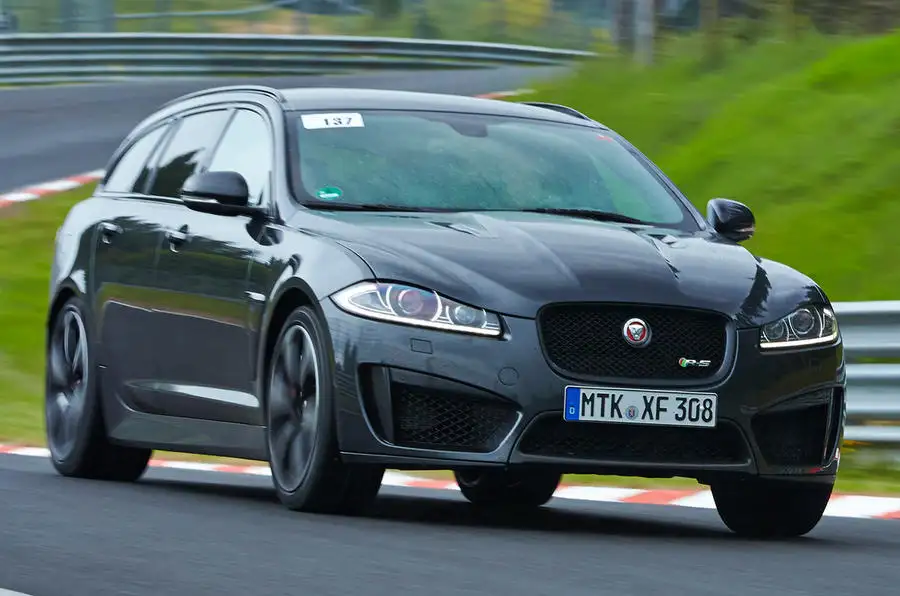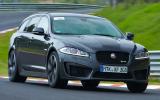What is it?
The XFR-S Sportbrake is Jaguar’s first high-performance estate. Unlike the Jaguar XF saloon range, there’s no 503bhp XFR Sportbrake to provide a stepping stone between the sensible four and six-cylinder diesel estate models and the range-topping XFR-S, so if you want a V8-engined XF estate, it’s this full-house version or nothing.
It’s a big leap up from the 271bhp of the next most powerful model in the Sportbrake line-up, the 3.0 V6 Diesel S, and there’s an equally yawning £30k price gap to the next most expensive six-cylinder model.
Jaguar admits that it will sell only about 100 examples of the XFR-S Sportbrake (mostly in the UK) in its current life cycle, what with its thirsty V8 petrol engine and £80k-plus price tag.
But there’s something strangely appealing about the concept of taking an inherently practical estate and turning it into a hot rod, in this case by bolting in the mighty 542bhp supercharged 5.0-litre V8 from the XFR-S saloon (and most recently the Jaguar F-Type R coupé).
The R-S Sportbrake’s £82k list price makes it around £5k more expensive than Audi’s 552bhp RS6 Avant and just a few hundred quid cheaper than the 549bhp Mercedes-Benz CLS63 Shooting Brake. That’s ambitious pricing, given that it’s less powerful and is shaded on standing-start acceleration, especially by the all-wheel-drive RS6 (4.6sec to the Audi’s 3.9sec), although unlike its German rivals, the British car is allowed to run to a governed 186mph.
Compared with the regular Sportbrakes, the R-S gets an aggressive body kit that is said to reduce lift and improve stability. There’s a deeper front bumper with larger air intakes at the front for improved engine cooling, a prominent carbonfibre rear diffuser and a bigger roof spoiler, while it rides on 20-inch forged alloy wheels and bespoke Pirelli P Zero tyres.
Underneath, the standard model's rear air springs have been replaced by steel coils and there’s a new rear subframe that contributes to a 30 per cent increase in lateral suspension stiffness all round. The XFR-S saloon’s adaptive damping, active electronic rear differential and stability control settings have all been adopted but recalibrated for use in the Sportbrake, too.





























Join the debate
Add your comment
As Autocar remarked many years ago
I think it was in a review for an M5 estate or similar. Funny then, still true now?
Still looks pretty good to me
i've seen quite a few on the